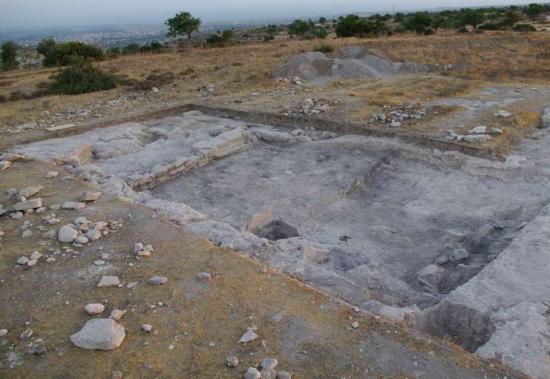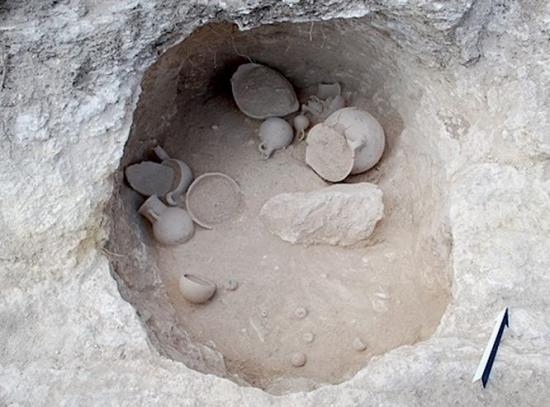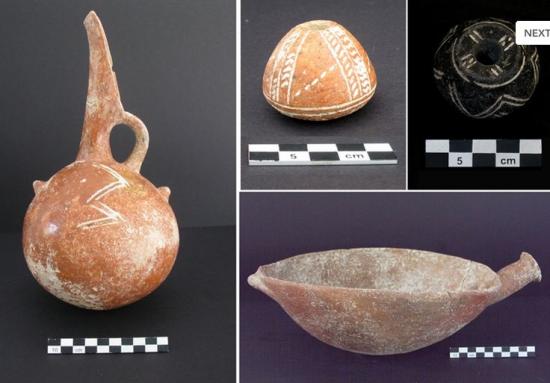Completion of the 2012 excavations at Erimi-Laonin tou Porakou
Department of Antiquities
Source -
http://www.moi.gov.cy/moi/pio/pio.nsf/All/65B7F79BC6CDCA66C2257A32003096BE?OpenDocument
The Ministry of Communications and Works, Department of Antiquities, announces the completion of the 2012 fieldwork season undertaken by the Italian Archaeological Mission (Università degli Studi di Firenze) at the site of Erimi-Laonin tou Porakou. This year’s investigations took place from April 1st to April 28th 2012.
The results this year confirmed the occupation of the site throughout two main phases (Phases A and B) ranging from the end of the Early to the very beginning of Late Bronze Age period (EC II/III-LC I).
The Bronze Age settlement of Erimi-Laonin tou Porakou covers an average area of 1,5 hectares and was organized into three main discrete areas, on sloping terraces and distinguished as to their primary use and function. The top of the mound was largely occupied by a huge workshop and industrial area (Area A)

View of a Trench of the Workshop Complex
the first lower terrace by domestic units of a residential quarter (Area B), while terraces sloping towards the South were occupied by a cemetery area (Area E).

A Rock-cut Tomb of the Necropolis
The recent rescue-excavations carried out by the Department of Antiquities, Cyprus in the area of Ypsonas-Vounaros (about 400 m. northward the top of the mound) revealed three new and partially looted graves of the same chronological horizon as the ones excavated during the last years within southern Area E. This new evidence points to the presence of two distinct tombs clusters (a Southern and a Northern cemetery) related to the Bronze Age settlement of Erimi-Laonin tou Porakou.
The main focus of this year’s investigations was the top mound area (Area A), where the wide Workshop Complex was identified. The Workshop Complex covers an area measuring 20 x 20 m. which is currently under investigation. The aim of the planned investigation was twofold: (a) to clarify the features and the chronology of the earlier phase (Phase B) in an extended area, and (b) to verify the outline and general design of the Complex.
In the Storage Area I (SA I) a series of installations (a circular hearth, a rounded and rectangular basin, and jars and pithoi emplacements) were found directly carved into the plaster floor or directly built on it, thus hinting to a multi-functional room. In the Workshop Complex an extended area of 10 m. towards the West was investigated and three new rooms (SA III, SA IV, SA V) were exposed.
The ceramic assemblage of the two Phases clearly hints to a typical production of the South Coast horizon of the Early to Late Bronze Age I period, with a large percentage of Red-Polished and less attested Drab-Polished ware. Furthermore, a collection of stone tools, clay spindle-whorls with incised decoration and loom-weights were recorded, thus supporting the interpretation of the Workshop Complex, as an area mainly dedicated to textiles activities.

A Few Examples of the Ceramic Objects Unearthed